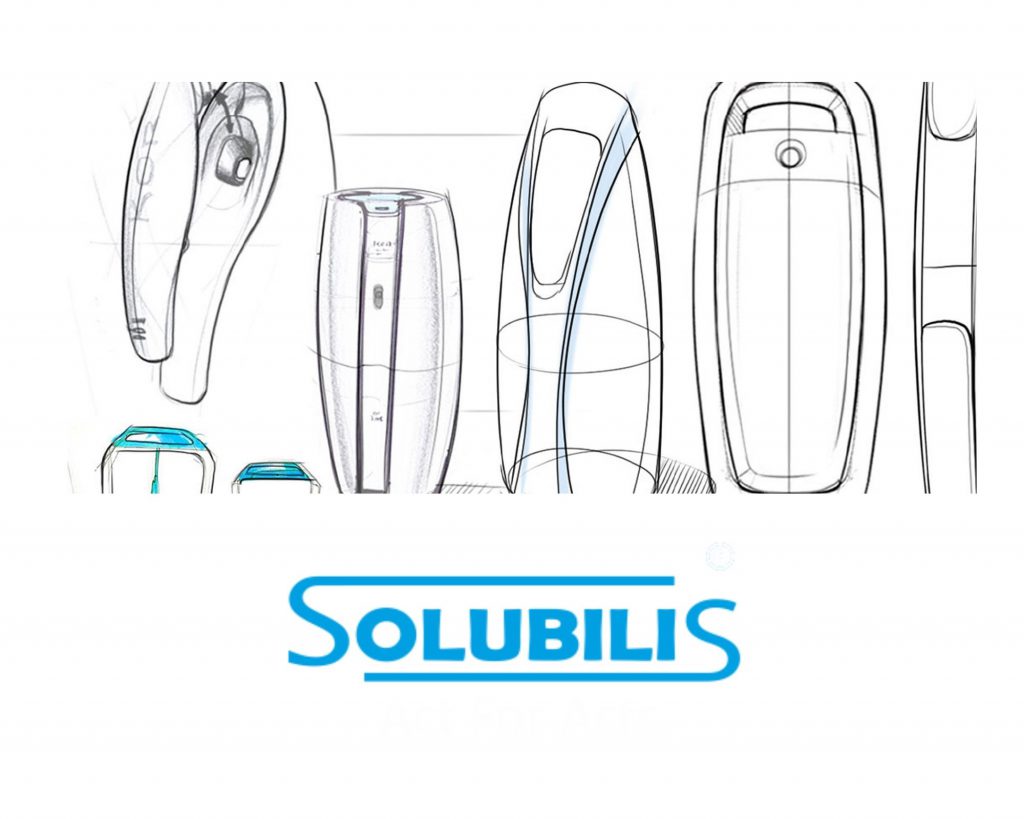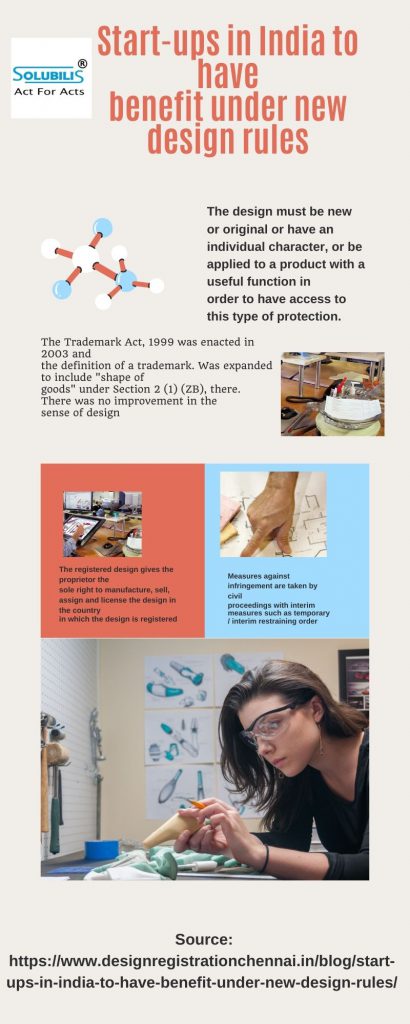TALK TO EXPERTS
India’s new reform of its design rules for design registration will greatly benefit start-ups and small organizations seeking design registration. The revised design rules now identify “start-ups” as a separate category of applicants and reduce overall filing and proceeding fees for smaller companies. This amendment is in line with the amendments had made to the Patent Rules.
And various other initiatives taken by the government to promote entrepreneurship and start-ups in India in particular. The proposed Patents (Second Amendment) Rules in November 2020, 2020 reduced the cost of filing and proceedings for applicants with start-ups and small entities. Overall, the current improvements will make intellectual property protection affordable as well as accessible to a variety of business segments, and generally speed up design filings.
Definition
“Start-up” has introduction as a separate category of applicant for designers. A start-up is defined as:
“Start-up” means-
(A) An entity in India, recognized as a startup by the competent authority under the Start-up India initiative; and
(B) In the case of a foreign entity, a company which meets the criteria for turnover and investment or registration period as per the Startup India Initiative and issues a declaration of effect.
Explanation: When the turnover is calculated, the Reserve Bank of India’s foreign exchange reference rates will prevail. ‘
Notice No. G.S.R. According to 127 (e), an entity will be considered a startup if the following conditions are met:
If a private limited company (as per Companies Act, 201 per) is involved or registered as a partnership pay firm (under the register), the entity will be considered for a start up to 10 years from the date of inclusion / registration. 59 of the Partnership Act, 1932) or Limited Liability Partnership in India (under the Limited Liability Partnership Act, 2008).
The turnover of the entity has not exceeded a particular amount.
The entity is working towards innovation, development or improvement of products or processes or services, or if it is a scalable business model with high potential for job creation or wealth creation.
Existence is not created by splitting or rebuilding an existing business.
Enforcement of Design

The registered design gives the proprietor the sole right to manufacture, sell, assign and license the design in the country; in which the design has registered. Measures against infringement taken by civil proceedings with interim measures such as temporary / interim restraining order, maintenance of separate account by the respondent, etc., by restraining order and damages until the case has heard till final remedy is given. Is. In addition, there is a common remedy for misrepresentation of the amount of damage / injury to the owner of the design, such as the source of the design.
The defense in a breach claim usually involves denying the breach, the counter claims that the plaintiff’s design lacks innovation, the design is not valid, that the design registration application’s priority date was before the design’s publication, use of the design in the country or any other part of the world which has a significant lack of content. So the benefits of registering a design are like taking mileage on competing products, preventing others from using the design, keeping options open to licensing others, avoiding an interim order from the owner to file a previously / similar design claim. Self-help counselling: You can do a variety of things to make it generally harder for infringers to copy your product. For example, you can:
. Think about the design of your product, and how easy it would be for someone to reproduce it without seeing your original creations;
. When you hire employees, keep effective IP-related clauses in the employment contract. Also make sure you educate your employees on IP rights and protection;
. There are methods of physical defense and destruction for documents, drawings, tooling, samples, machinery, etc .;
. Make sure there is no .leakages. The packaging that has used to pass the counterfeit product to the counterfeit product;
. Check the over-run product to make sure the actual product has no selling under a different name.
Industrial Design

Within the scope of industrial property laws, a design can be protected as follows:
-
Industrial design for design registration:
The design must be new or original or have an individual character, or have application to a product with a useful function in order to have access to this type of protection.
- Trademark: The Trademark Act, 1999 had enactment in 2003 and the definition of a trademark. Had expansion to include “shape of goods” under Section 2 (1) (ZB), there. There was no improvement in the sense of design. The Design Act 2000 to remove the definition of trademark under the newly-fangled Trademark Act.
This leads to a reckless approach in which the owner of a registered design is likely to seek trademark protection even after the expiration of the 15-year protection period that exists under the Designs Act. Nevertheless, this instantaneous realization will have understanding in the notion that “shapes of goods” now have integration into the definition of trademark. Under the Trademarks Act and the legislature was never to increase the monopoly in rational design, hence the explicit exclusion of trademarks under Section 2 (d) of the Design Act.
The shape, design or packaging of a particular product may be a distinct factor between these and other companies’ products. In this case, the design may have registration as a trademark. In order to have protection as a trademark, the design must be specific and not include the sole functional shape or the function of the product to which it applies.
Unfair competition: In India, industrial design is also protected by unfair competition laws. Thanks to these provisions, the design has protection against any unfair competition functions. Especially confusion, imitation, taking advantage of someone’s reputation, etc. As a means of protection against possible unfair or unjust behavior by third parties, the design holder has the right to take legal action, including: – Action for termination
– Proceedings for compensation
– Action for damage
– Action for improper prosperity
